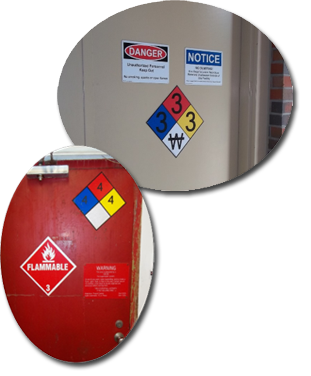



First-Some General Rules with Chemicals in the Laboratory




Exercise Prudence in Procurement
Bulk purchases of hazardous chemicals do not save the University money unless they can be shared or used within months of purchase. In fact, many chemicals will cost far more to dispose of than what is saved by purchasing larger than needed quantities.
The cost to dispose of chemicals that have become unstable, unusable, or have simply lost their label can easily exceed 10 times the original purchase price.
Stockpiling and recycling of hazardous chemicals has created very dangerous situations in our laboratories. We have contracted for High-Hazard chemists (Explosive Ordnance Disposal) several times in the past to stabilize and dispose of shock sensitive chemicals that were too dangerous to move. Such items put everyone at risk.
If you order too much product, find another laboratory that can use it while it is still pure and fresh; otherwise, arrange to return or dispose of it before the problem becomes worse.
Storage Cabinets
Chemical storage in the laboratory should be in cabinets near points of use.
This is especially true for flammables and corrosives.
Cabinets can be either permanently installed or portable but must always be properly designed and clearly labeled.
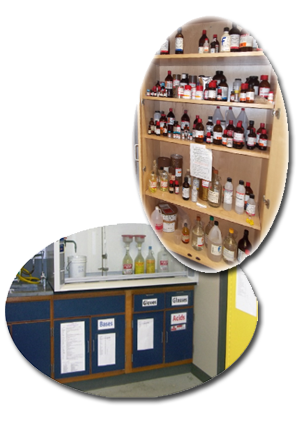
Flammables
Flammable storage cabinets must meet strict NFPA design requirements.
Yellow or red coloration is common for these units but color-coding is neither standardized nor required.
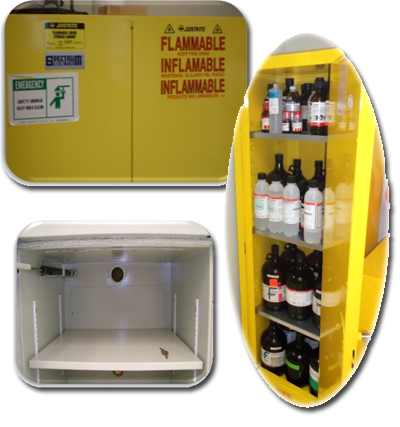
Flammable Cabinet Requirements
(Per NFPA-30)
Units must be conspicuously marked "FLAMMABLE – KEEP FIRE AWAY."
Storage capacity shall be limited to 120 gallons of flammable liquid per storage cabinet.
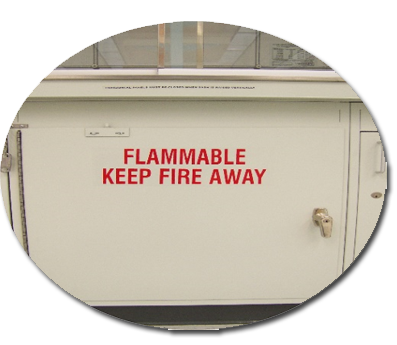
Flammable Cabinet Requirements
Cabinet construction must be either:
Self-closing doors and hold open devices with fusible links should also be used.
Flammable/Combustible Liquid Storage
Definitions, summarized from NFPA-30 (2003):
Special Note: All unstable liquids are treated as Class IA.
Individual Container Size Limits
Each liquid container must be limited to the following maximum quantities (liters), per NFPA:
| Class IA | Class IB | Class IC | Class II | Class III | |
| Glass | 0.5 | 1 | 5 | 5 | 20 |
| Polyethylene (UN 1H1) | 5 | 20 | 20 | 450 | 450 |
| Metal | 5 | 20 | 20 | 20 | 20 |
| Safety Cans | 10 | 20 | 20 | 20 | 20 |
NFPA also requires that potential spills be limited to 20 liters or 5 gallons, so FSU policy is to limit all laboratory storage containers to this maximum size. Larger containers must be kept in specially constructed storage rooms.
Laboratory Unit Chemical Storage
(Per Fire Code – NFPA 45, 2004)
| Sprinklered Areas | ||||
| Non-sprinklered Area | ||||
Note: This determination is made during the planning phase of new construction or major renovation projects based on information provided to the design professionals at that time. Florida Building Code requirements, based on international codes, also apply, these have the same aim but are much more complicated and based on smaller “control area” categories.
The laboratory unit must meet additional requirements, and be formally approved by the AHJ for the appropriate higher level classification, before quantities can be increased above these levels.
The only way to ensure compliance with these limits is to have a real time chemical inventory for all spaces within the area.
Corrosives Cabinets
Corrosive cabinets are lined or constructed with corrosion resistant material such as plastics with stainless steel fasteners.
Never store corrosives in metal flammables cabinets. The cabinets can be damaged very quickly by rust.
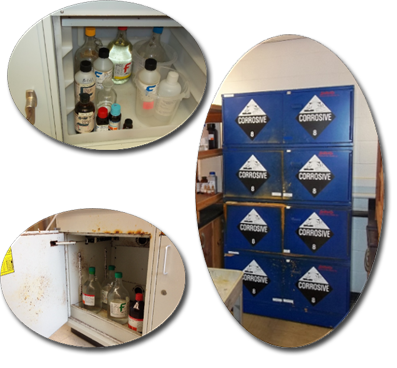
Ventilating Cabinets
Prior to venting any already installed cabinet, consult with EH&S to ensure that the installation will meet code requirements and not negatively impact existing system performance.
It is usually safest not to ventilate flammable storage cabinets however, this may be necessary when all other efforts to control fugitive emissions have failed.
The best candidates for ventilation are the permanently installed base cabinets under fume hoods. If you have a choice, use these for your problematic and noxious chemicals.
Be sure to verify vent lines are hooked up properly before removing bung plugs. Unfortunately, conditions such as shown in this picture are too often encountered.
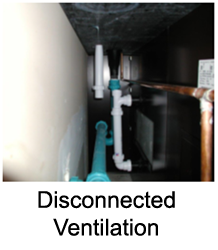
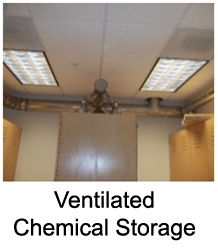

Refrigerators & Freezers
Not all refrigerators and freezers are equal. Some are specifically designed to store flammable materials while others should never be used for such storage.
The safe storage of flammable liquids requires specially constructed or modified units that will not ignite vapors that may buildup within the device.
Purchased units will be certified to meet Class I, Division I location requirements contained in the National Electric Code (NFPA-70).
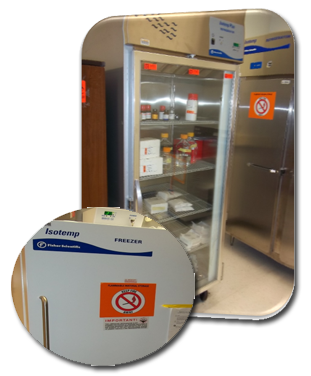
Modifying Refrigerators & Freezers
(To meet Flammable/Combustible storage requirements per NFPA-45)
Equipment may be modified by a trained electrician to meet the same safety criteria as purchased certified equipment by ensuring:
Laboratory Work Areas
Storage of chemicals on countertops and shelves in laboratories, outside of approved cabinets, should be limited to those with low hazard ratings that are currently being used.
Shelves and counters used for storage should have lips or backs to hold containers more securely.
Even low-hazard chemicals must still be segregated by hazard class and compatibility.
To prevent spills and exposures, hazardous chemicals should not be stored above eye level.

Laboratory Work Areas
Bulk containers (larger than 5 gallons in size) of flammable or corrosive chemicals shall be kept out of laboratory areas.
Highly flammable, combustible, toxic, or similarly hazardous materials should be purchased and stored in the smallest appropriate container, usually less than one liter.
When operations demand large volumes of chemicals used over short periods of time, provisions should be made to provide suitably designed storage areas nearby but outside of the laboratory work area.
Storage Rooms
In addition to Building Code requirements, chemical storage rooms must be designed and operated in accordance with the Florida Fire Protection Code (primarily the incorporated versions of NFPA-30 and 45).
If used for chemical waste storage, the safety and environmental compliance requirements of the Environmental Protection Agency as described in Title 40, Code of Federal Regulations (specifically Parts 262.34 or 265.31, 265.32a-c, and 265.176) will also apply.
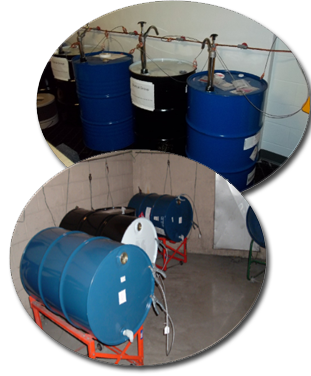
Storage Rooms
Since these areas are specifically intended to store larger volumes and many different categories of hazardous materials, designs must include enhanced controls.
Common features found in these areas are:
Once operational, weekly inspections must be performed and logged to certify adequacy of the facility systems and proper container management.
